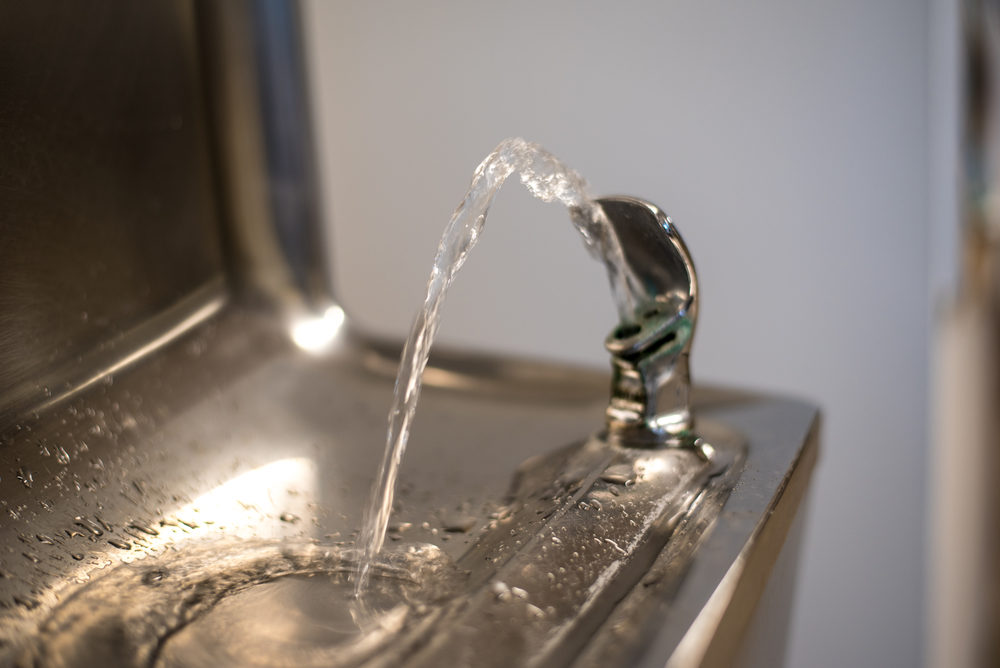School Drinking Water Lead Contamination is Widespread, Study Finds; Amid Revised Rules on Testing
This week the Biden Administration revealed a plan to replace the nation's lead drinking water pipes over the next 10 years.

As new legislation proposed by the Biden Administration aims to replace lead tainted water supply lines across the nation, new research suggests elevated levels of lead in water at schools nationwide is more widespread than previously believed.
In findings published in the American Chemical Society’s Environmental Science & Technology Letters on December 15, researchers at Northeastern University indicate that over one third of public water supplied to schools in Massachusetts for hand washing and drinking contained elevated and actionable levels of lead.
Childhood lead exposure can affect a child’s ability to learn and develop. While routine testing can detect elevated blood lead levels in children, health experts have consistently emphasized there is no safe blood level of lead exposure, and more than half a million children have blood levels considered unsafe.
The U.S. Centers for Disease Control and Prevention (CDC) warns the side effects of lead poisoning can result in nervous system injury, brain damage, seizures or convulsions, cognitive impairment, coma and even death for young children.
In this latest study, researchers analyzed 47,727 lead measurements taken from 1,094 schools in Massachusetts, to understand how widespread lead contaminated water problems are, and how these measurements should be interpreted.
According to the findings, 12% of the fixtures from water fountains and faucets had lead levels of more than 15 parts per billion (ppb), which is the action level set forth in the Safe Drinking Water Act by the U.S. Environmental Protection Agency (EPA). Under the EPA’s rule, drinking water sources containing levels exceeding this threshold are to be shut off.
While the study did not look to determine whether schools in declining socioeconomically areas were most impacted, the findings did reveal almost all of the contaminated samples came from 34% of participating schools in the state.
Overall, 90% of the fixtures with samples that exceeded the threshold were located in 376 Massachusetts schools that were tested. However, researchers indicate that number could be much larger given that only 1,094 of the 1,840 public schools in the state were tested, and also excluded private institutions.
The American Chemical Society study highlights the need for additional and large scale real-world data collection to identify schools with elevated levels of lead in drinking water. The researchers advocate for additional funding to be allocated to schools to be used for routinely testing and remediating sources of lead.

Learn More About
Children diagnosed with lead poisoning after exposure to peeling or chipping lead paint in a rental home may be entitled to financial compensation and benefits.
Learn More SEE IF YOU QUALIFY FOR COMPENSATIONThe study comes on the heels of the “Lead Pipe and Paint Action Plan” announced this week by the Biden-Harris Administration, which would allocate billions in funding over the next decade to eliminate lead from water pipes and homes that are believed to expose upward of 10 million American households and over 400,000 schools and daycare centers to toxic lead.
The plan also outlines the responsibility of the EPA to reform its regulations and begin developing new rules for lead and copper pipes. The EPA will also be tasked with working directly with the Labor Department in establishing technical assistance hubs across the nation to frontline the efforts to remove lead pipes and faucets from drinking water supply lines.
Last month, the CDC issued a statement announcing a plan to update its Blood Lead Reference Value for Children, as part of an effort to provide early detection measures and reduce preventable long term lead exposure side effects.
The CDC indicates the change in criteria is aimed at focusing resources on children with the highest blood lead levels (BLLs), compared to most U.S. children ages 1-5, so more prompt actions can be taken to reduce their levels, mitigate health effects, and identify or eliminate sources of lead exposure.
While under the 5 µg/dL threshold, reports have indicated as many as 200,000 children between one and five years of age were considered high-risk. However, under the 3.5 µg/dL baseline, some reports have projected that number to more than double.
According to the Institute of Health Metrics Evaluation, approximately 240 million people are overexposed to harmful lead, resulting in approximately 900,000 deaths each year caused by long-term health effects of lead exposure, including kidney damage and cardiovascular disease.
Exposure to even low levels of lead may play a larger role in heart disease and deaths in the United States. Ensuring children are tested for lead exposure and treated is key to preventing illness, CDC experts warn.






0 Comments